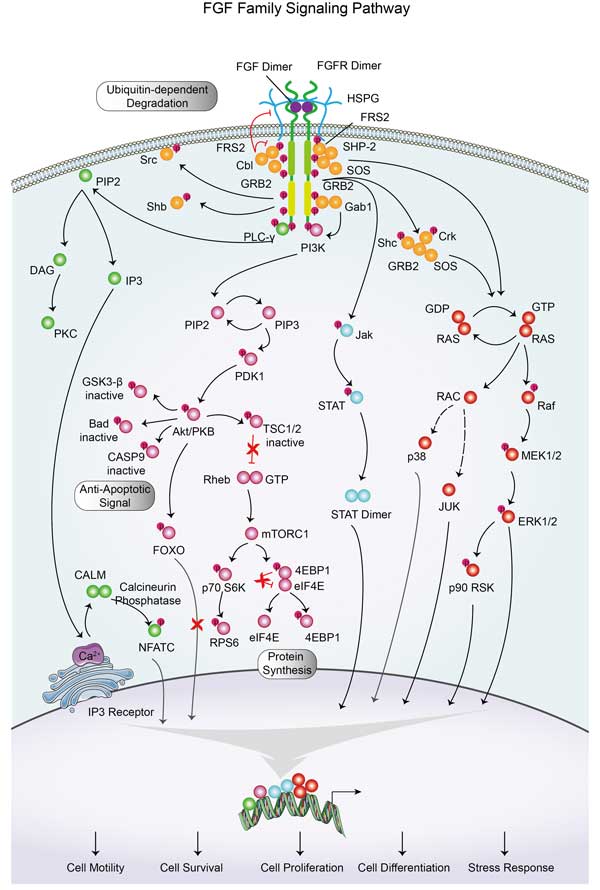FRS2
-
Official Full Name
fibroblast growth factor receptor substrate 2 -
Overview
Fibroblast growth factor receptor substrate 2 is a protein that in humans is encoded by the FRS2 gene. -
Synonyms
FRS2;fibroblast growth factor receptor substrate 2;FRS2A;FRS2alpha;SNT 1;SNT1;FGFR signaling adaptor SNT;FGFR signalling adaptor;FGFR substrate 2;FGFR-signaling adaptor SNT;FRS 2;FRS2_HUMAN;SNT;SNT-1;Suc 1 Associated Neurotrophic Factor Target;Suc1 associated neurotrophic factor target 1;Suc1-associated neurotrophic factor target 1
Recombinant Proteins
- Human
- Chicken
- Mouse
- Rat
- E.coli
- HEK293
- Wheat Germ
- Mammalian Cells
- In Vitro Cell Free System
- His
- GST
- DDK
- Myc
- Non
- Avi
- Fc
Background
What is FRS2 Protein?
FRS2 gene (fibroblast growth factor receptor substrate 2) is a protein coding gene which situated on the long arm of chromosome 12 at locus 12q15. FRS2 protein is a connector protein that plays a key role in various cellular signaling processes. It is localized to the plasma membrane through its n-terminal palmitoylation site and binds to specific receptor tyrosine kinases (RTKs) including FGF receptors, neurotrophin receptors, RET, and ALK through its PTB domain. FRS2 protein is activated by phosphorylation of its tyrosine residues to recruit downstream signaling molecules such as Grb2 and Shp2 to activate signaling pathways such as Ras/ERK, PI3 kinase and ubiquitination/degradation, respectively. The FRS2 family consists of two members, frS2α and Frs2β, which are highly similar in structure but differ in function. The FRS2 protein is consisted of 508 amino acids and FRS2 molecular weight is approximately 57.0 kDa.
What is the Function of FRS2 Protein?
FRS2 protein is a connector protein that plays an important regulatory role in various signal transduction processes. It is mainly involved in the fibroblast growth factor (FGF) signaling pathway and regulates biological effects including cell proliferation, differentiation and migration through interaction with receptor tyrosine kinase (FGFR). FRS2 protein is activated by phosphorylation of its tyrosine residues, which allows it to recruit and bind downstream signaling molecules such as Grb2, which in turn activates signaling pathways such as Ras/Raf/MAPK. In addition, FRS2 can also activate the PI3K/AKT signaling pathway through the Grb2/Gab1 complex, affecting cell migration and survival. However, FRS2 also has a negative feedback regulatory mechanism in the FGF signaling pathway. For example, ERK activation induced by FGF stimulation can in turn phosphorylate serine/threonine residues of FRS2, thereby inhibiting tyrosine phosphorylation of FRS2 and affecting its activation of downstream signaling pathways.
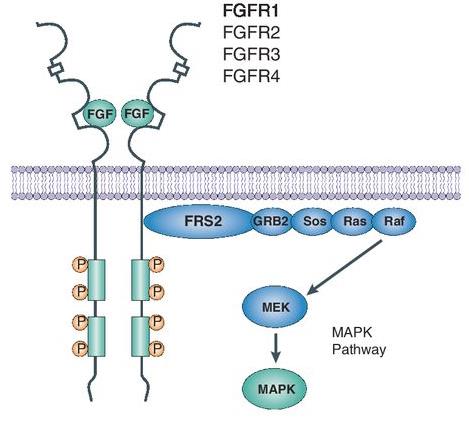
Fig1. FRS2 functions as an adaptor protein in the FGFR signaling pathway. (Leo Y Luo, 2015)
FRS2 Related Signaling Pathway
As a key adaptor protein in fibroblast growth factor receptor (FGFR) signaling pathway, FRS2 protein recruits a variety of downstream signaling molecules including Grb2 and Shp2 through its phosphorylated tyrosine residues, and activates major signaling pathways such as Ras/Raf/MAPK and PI3K/AKT. Thereby regulating cell proliferation, differentiation, migration and survival. In addition, FRS2 is also involved in the positive and negative feedback regulation of the FGF signaling pathway, in which the activation of MAPK/ERKs can phosphorylate FRS2 by serine/threonine, forming a negative feedback loop and inhibiting further tyrosine phosphorylation and signal transduction of FRS2. This versatility of FRS2 allows it to play an important role in cell signaling networks, especially in tumor development and treatment resistance.
FRS2 Related Diseases
Frs2-amplified cancer cells are dependent on FRS2 expression, and overexpression of FRS2 gives non-tumor cells the ability to anchor independent growth and form tumors in immunodeficient mice. As an aptamer protein in FGFR signaling pathway, activation of FRS2 induces downstream activation of Ras-MAPK signaling pathway, thereby promoting tumorigenesis. In addition, the abnormal activation of FRS2 has been implicated in other cancer types, including breast cancer and lung adenocarcinoma, and its abnormal expression in these diseases may be related to tumor aggressiveness, metastasis, and treatment resistance.
Bioapplications of FRS2
FRS2 protein has become a potential target for cancer therapy research due to its important role in a variety of cancers. Related applications include the development of small molecule inhibitors or monoclonal antibodies targeting FRS2 to block its activation in FGFR signaling pathway and inhibit tumor cell proliferation and metastasis; Using FRS2 as a biomarker for early diagnosis, prognosis assessment and treatment response monitoring of cancer; And to explore the role of FRS2 in the tumor microenvironment, to provide a basis for the development of new combination therapy strategies.
Case Study
Case Study 1: Leo Y Luo, 2015
High-grade serous ovarian cancers (HGSOC) are characterized by widespread recurrent regions of copy-number gain and loss. Here, researchers interrogated 50 genes that are recurrently amplified in HGSOC and essential for cancer proliferation and survival in ovarian cancer cell lines. FRS2 is one of the 50 genes located on chromosomal region 12q15 that is focally amplified in 12.5% of HGSOC. FRS2-amplified cancer cell lines are dependent on FRS2 expression, and that FRS2 overexpression in immortalized human cell lines conferred the ability to grow in an anchorage-independent manner and as tumors in immunodeficient mice. FRS2, an adaptor protein in the FGFR pathway, induces downstream activation of the Ras-MAPK pathway. These observations identify FRS2 as an oncogene in a subset of HGSOC that harbor FRS2 amplifications.
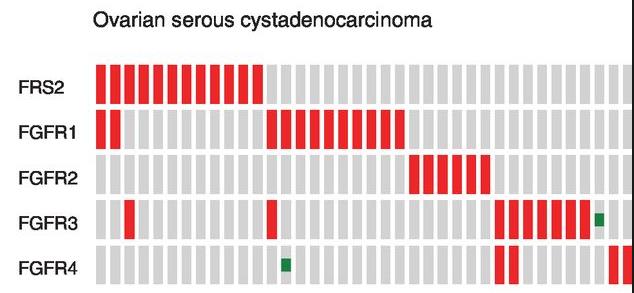
Fig1. FRS2 amplification and FGFR1, FGFR2, FGFR3, and FGFR4 amplifications are mutually exclusive in HGSOCs.
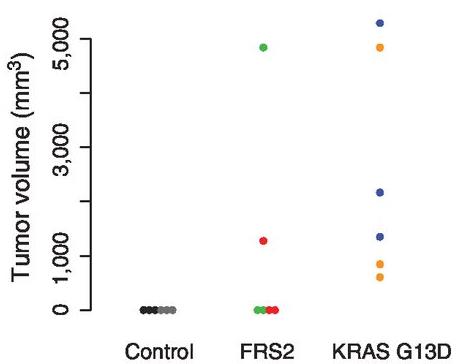
Fig2. FRS2 overexpression promotes tumorigenicity in vivo.
Case Study 2: Wenchao Zhou, 2009
Fibroblast growth factor (FGF) receptor substrate 2alpha (FRS2alpha) is the main mediator of signaling in the FGF pathway. Recent studies have shown that mitogen-activated protein kinase (MAPK) phosphorylates serine and threonine residues in FRS2, negatively affecting FGF-induced tyrosine phosphorylation (PY) of FRS2. Several kinds of stimuli can induce serine/threonine phosphorylation (PS/T) of FRS2, indicating that FRS2 may be useful for studying crosstalk between growth factor signaling pathways. This study reports that FGF-induced PY of FRS2 can be attenuated by EGF co-stimulation in PC12 cells; this inhibitory effect could be completely reversed by U0126, an inhibitor of MEK. Researchers further identified the ERK1/2-binding motif in FRS2 and generated FRS2-3KL, a mutant lacking MAPK binding and PT upon FGF and/or EGF stimulation. Unlike wild-type (WT) FRS2, FGF-induced PY of FRS2-3KL could not be inhibited by EGF co-stimulation, and FRS2-3KL-expressing PC12 cells exhibited more differentiating potential than FRS2-WT-expressing cells in response to FGF treatment.
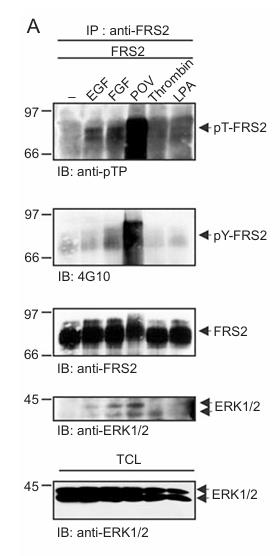
Fig3. Multiple stimulations provoked PT of FRS2.
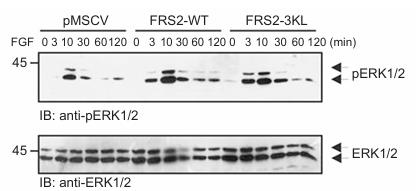
Fig4. FRS2-WT and FRS2-3KL induce different kinetics of ERK2 activation in 3T3 cells upon aFGF stimulation.
Quality Guarantee
High Purity
.jpg)
Fig1. SDS-PAGE (FRS2-22H)
.
.jpg)
Fig2. SDS-PAGE (FRS2-4506H)
Involved Pathway
FRS2 involved in several pathways and played different roles in them. We selected most pathways FRS2 participated on our site, such as ARMS-mediated activation,Adaptive Immune System,Axon guidance, which may be useful for your reference. Also, other proteins which involved in the same pathway with FRS2 were listed below. Creative BioMart supplied nearly all the proteins listed, you can search them on our site.
| Pathway Name | Pathway Related Protein |
|---|---|
| DAP12 signaling | SPRED2,SPRED1,LAMTOR2,SPNA1,HBEGF,KBTBD7,SPTA1,NEFLB,JAK1,DUSP1 |
| DAP12 interactions | DUSP10,FGF20A,CSF2RB,AGO2,CD300LB,PEBP1,DUSP2,RASGEF1A,DUSP7,DAB2IPB |
| Constitutive Signaling by Aberrant PI3K in Cancer | NRG3,TRAT1,KLB,EGF,NRG4,HBEGF |
| Adaptive Immune System | RASGRP1,MAPKAP1,FGF20A,SRMS,RNF220,CD207,RNF19B,KIF2C,KIF26A,KIF11 |
| ARMS-mediated activation | PHB,SPNA1,FRS3,RASGRP4,SPTB,FGF8B,PAQR3A,KLB,JAK3,PEBP1 |
| BDNF signaling pathway | EIF4E,DOK5,SYN1,KCNN2,EEF2,EGR1,FRS3,GNB2L1,DPYSL2,BCL2L11 |
| Axon guidance | PAK2,SEMA4C,EPHB4A,COL9A1A,SCN3A,TRPC7,EFNB2,DPYSL3,PEA15,HBEGF |
| Cytokine Signaling in Immune system | EIF4G2,ARIH1L,CSF2RA,NRG2A,EDA,SPTA1,JAK1,PEA15,NUPL2,DUSP1 |
Protein Function
FRS2 has several biochemical functions, for example, fibroblast growth factor receptor binding,insulin receptor binding,neurotrophin TRKA receptor binding. Some of the functions are cooperated with other proteins, some of the functions could acted by FRS2 itself. We selected most functions FRS2 had, and list some proteins which have the same functions with FRS2. You can find most of the proteins on our site.
| Function | Related Protein |
|---|---|
| protein binding | SIAH2,IGFLR1,C16orf79,ARHGEF15,EPB41L3,GGA2,SSRP1,NLGN4X,TPR,MARK4 |
| phosphatase activator activity | BMP2,GTF2F1 |
| transmembrane receptor protein tyrosine kinase adaptor activity | BLNK,SH2B2,PIK3R1,SHC1,STAP1,TRAT1,IRS1,DOK2,GAB2 |
| neurotrophin TRKA receptor binding | GRB2,EFNA5,PIK3R1,NGFR,SHC1,PLCG1 |
| fibroblast growth factor receptor binding | FGF4,FGF20A,FGF8,FGF18B,FGF2,FGF10B,FGF21,FGF6B,Fgf15,FGF10A |
| insulin receptor binding | IRS4,SNX4,FRS2A,PHIP,SHC1,IGF1R,INSL3,FRS3,DOK7,IGF1 |
Interacting Protein
FRS2 has direct interactions with proteins and molecules. Those interactions were detected by several methods such as yeast two hybrid, co-IP, pull-down and so on. We selected proteins and molecules interacted with FRS2 here. Most of them are supplied by our site. Hope this information will be useful for your research of FRS2.
PTPN11;RPS6;BECN1;suc1;FGFR1;GRB2;SH2B1;Coro1c
FRS2 Related Signal Pathway
Resources
Gene Families
Research Area
Related Services
Related Products
References
- Issa, A; Gill, JW; et al. Combinatorial targeting of FGF and ErbB receptors blocks growth and metastatic spread of breast cancer models. BREAST CANCER RESEARCH 15:-(2013).
- Hisaoka, K; Tsuchioka, M; et al. Tricyclic Antidepressant Amitriptyline Activates Fibroblast Growth Factor Receptor Signaling in Glial Cells INVOLVEMENT IN GLIAL CELL LINE-DERIVED NEUROTROPHIC FACTOR PRODUCTION. JOURNAL OF BIOLOGICAL CHEMISTRY 286:21118-21128(2011).


